For Product Registration and general enquires please contact us
Golden Sesame
The raw seeds of Golden Sesame resemble the toasted seeds of white sesame. Once they are fully dry they turn a nice golden brown colour. The flavour is somewhat milder than the Black Sesame kind, but still tasty and appealing.
Shipping & Returns
West Coast Seeds ships anywhere in North America. However, we are not able to ship garlic, potatoes, asparagus crowns, bulbs, onion sets, Mason bee cocoons, or nematodes outside of Canada. We regret, we cannot accept returns or damages for orders outside of Canada. The minimum shipping charge to the US is $9.99.
Description
More details about Golden Sesame
The raw seeds of Golden Sesame resemble the toasted seeds of white sesame. Once they are fully dry they turn a nice golden brown colour. The flavour is somewhat milder than the Black Sesame kind, but still tasty and appealing. Use this variety to grind into tahini, or toast the seeds and sprinkle them over salads or sushi. The subtle crunch and flavour really elevates nearly any dish. Remember that the plants are heat and drought loving. Any steps that will add heat will improve productivity. Try growing them in a raised bed with no irrigation. In our field trials, black plastic mulch seemed to produce a good response. This plant is excellent for xeriscaping and for attracting pollinators. Matures in 75-110 days. (Open-pollinated seeds)-
- Rich colour
- Mild flavour
- Matures in 75-110 days
- Open pollinated seeds
All About Golden Sesame
Latin
Sesamum indicum
Family: Pedaliaceae
Difficulty
Somewhat challenging
Season & Zone
Season: Hot season
Exposure: Full sun
Timing
Sow seeds indoors 4-6 weeks before the last average frost date. Transplant under cover a similar period after the last frost date. Remove the cover in late spring, once the night time temperatures are consistently above 10°C (50°F).
Starting
Lightly cover the seeds with sterilized, soil-less starter mix, and keep just moist until germination. Don’t keep the seeds in a highly damp environment, and be sure not to over-water the seedlings. Once they sprout, reduce watering to once a week until transplant time. Optimal soil temperature for germination: 21°C (70°F).
Days to Maturity:
From transplant date.
Growing
If steps are taken to increase warmth in and around the plants, they will be more productive. Try transplanting into a raised bed, or into the ground using black plastic mulch over the soil. Do not fertilize sesame plants, and avoid drip irrigation, as they really do like it dry. Plant fairly densely at 15cm (6″) spacing, in rows 60-45cm (24-36″) wide. Sesame is indeterminate, so it will continue to bloom and set seed capsules until the end of summer. Expect flowering to peak in mid- to late summer.
The tubular flowers of the sesame plant are highly attractive to honeybees, and are said to produce some of the highest grade of honey. The plants are relatively self-fruitful, so when the flowers open, the seeds are already fertilized. The seeds are produced in pods (seed capsules) that appear along the stem, appearing from the bottom upward.
Harvest
Around the end of summer, some of the pods near the bottom of the stem (the first flowers that opened), may begin to show signs of ripeness. When ripe, the pods begin to split from the blossom end. Don’t worry if this doesn’t happen in the field. Before cold, wet weather arrives, cut the stems at the base and gather them to dry some place that is flat — hanging them will cause the seeds to just fall out as the pods dry. As the plants dry, the foliage will darken and more pods will open from the base of the stem upwards. Once most of the pods have opened, bash them against the sides of a bucket to collect the dry seeds. The seeds are edible at this stage, and resist spoilage better than most nuts. They can also be toasted, pressed for oil, or ground into the paste known as tahini.
Sesame plants each produce quite a lot of seeds, but the seeds have little mass. From a 10 foot long, 2½ foot wide row, expect to harvest approximately 425g (just under one pound) of seeds.





How to Grow Sesame

Step 1: Timing
Sow seeds indoors 4-6 weeks before the last average frost date. Transplant under cover a similar period after the last frost date. Remove the cover in late spring, once the night time temperatures are consistently above 10°C (50°F).
Step 2: Starting
Lightly cover the seeds with sterilized, soil-less starter mix, and keep just moist until germination. Don’t keep the seeds in a highly damp environment, and be sure not to over-water the seedlings. Once they sprout, reduce watering to once a week until transplant time. Optimal soil temperature for germination: 21°C (70°F).
Step 3: Growing
If steps are taken to increase warmth in and around the plants, they will be more productive. Try transplanting into a raised bed, or into the ground using black plastic mulch over the soil. Do not fertilize sesame plants, and avoid drip irrigation, as they really do like it dry. Plant fairly densely at 15cm (6″) spacing, in rows 60-45cm (24-36″) wide. Sesame is indeterminate, so it will continue to bloom and set seed capsules until the end of summer. Expect flowering to peak in mid- to late summer. The tubular flowers of the sesame plant are highly attractive to honeybees, and are said to produce some of the highest grade of honey. The plants are relatively self-fruitful, so when the flowers open, the seeds are already fertilized. The seeds are produced in pods (seed capsules) that appear along the stem, appearing from the bottom upward.
Step 4: Germination
Days to Maturity: From transplant date. From a 10 foot long, 2½ foot wide row, expect to harvest approximately 425g (just under one pound) of seeds.
Step 5: Harvest
Around the end of summer, some of the pods near the bottom of the stem (the first flowers that opened), may begin to show signs of ripeness. When ripe, the pods begin to split from the blossom end. Don’t worry if this doesn’t happen in the field. Before cold, wet weather arrives, cut the stems at the base and gather them to dry some place that is flat — hanging them will cause the seeds to just fall out as the pods dry. As the plants dry, the foliage will darken and more pods will open from the base of the stem upwards. Once most of the pods have opened, bash them against the sides of a bucket to collect the dry seeds. The seeds are edible at this stage, and resist spoilage better than most nuts. They can also be toasted, pressed for oil, or ground into the paste known as tahini. Sesame plants each produce quite a lot of seeds, but the seeds have little mass. From a 10 foot long, 2½ foot wide row, expect to harvest approximately 425g (just under one pound) of seeds.Additional information
| Matures | in 75-110 days |
|---|---|
| Season | Hot season |
| Exposure | Full-sun |
| Quantity | 1g, 5g, 25g, 100g, 500g |
You must be logged in to post a review.




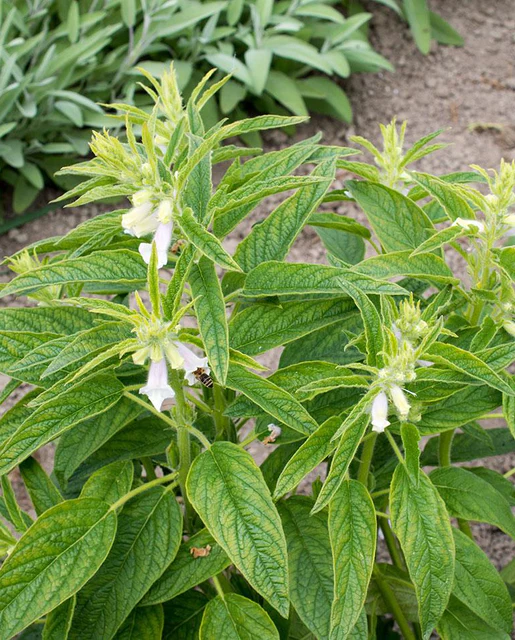
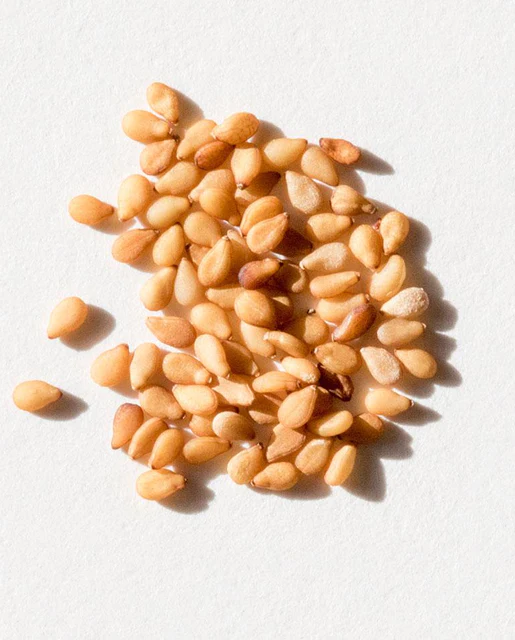
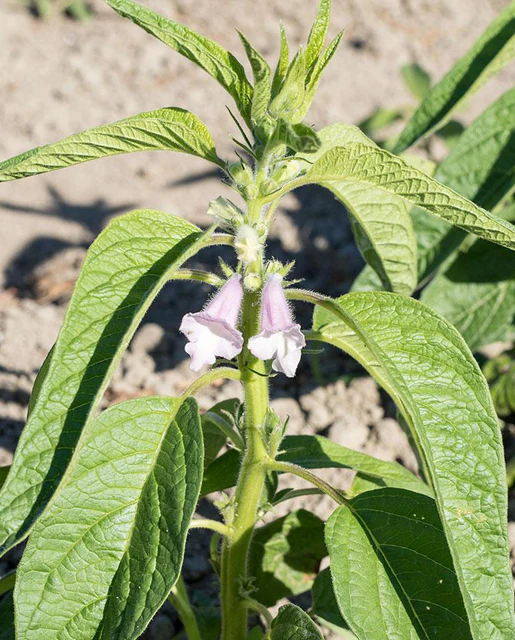
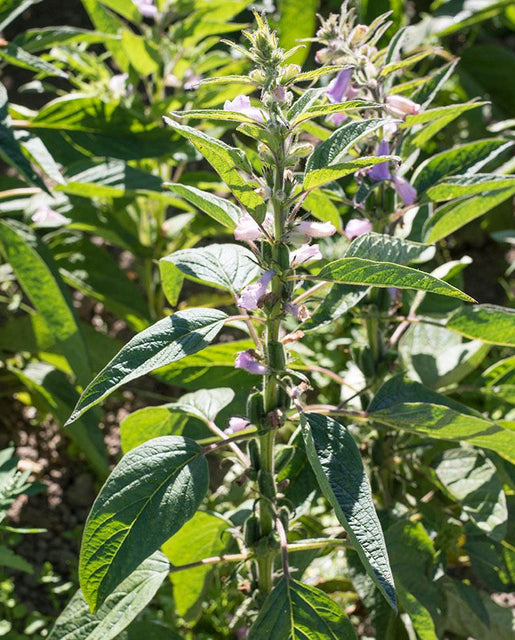
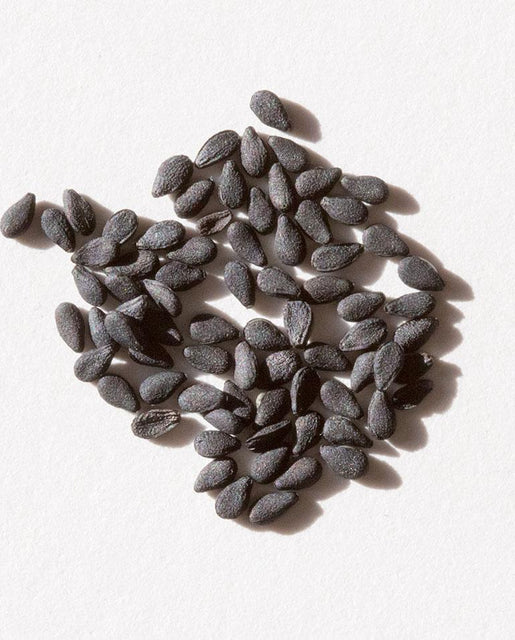




Reviews
There are no reviews yet.